Chapter 1
Introducing Kickstarter
In This Chapter
![]() Getting a handle on crowdfunding
Getting a handle on crowdfunding
![]() Understanding how Kickstarter works
Understanding how Kickstarter works
![]() Taking advantage of Kickstarter
Taking advantage of Kickstarter
![]() Spotlighting how Kickstarter is different
Spotlighting how Kickstarter is different
“I get by with a little help from my friends. . . .” It’s a line from one of the Beatles’ most popular songs but also a mantra for millions. People seek help for everything — and many great communities and companies are built thanks to the generosity of a group of people, all working toward a common goal.
That concept has been frequently translated to charitable endeavors. How often have you been asked to donate $5 for a bake sale or $25 for a fundraising walk? When you hear statistics about millions being raised for a charity through a race or telethon, it’s because a large group of people backed the charity — some on a large scale at a high level, some on a smaller scale at a more modest level. The essential idea, though, is that a large group of people backed a cause. Whatever was done was done by a crowd.
This phenomenon has a name — crowdfunding — and it’s one of the essential concepts behind Kickstarter. In the sections that follow, you learn what crowdfunding and Kickstarter are all about, discover their advantages, and how Kickstarter specifically uses the crowdfunding concept to help people with funding their creative projects.
Looking at the Concept of Crowdfunding
Crowdfunding is not a new idea. As I mention earlier, countless charity organizations have used crowds to meet their fundraising goals.
You even see crowdfunding on a very basic level in most households. Each member contributes something to the overall success of the house. Dad contributes X, Mom contributes Y, kids contribute Z. Together, the crowd makes the house work, and unlike donating to a charity out of the goodness of your heart, people involved in this scenario want something out of their backing. In this case, all the members of the household work together to benefit from a stable residence, protection from the elements, and a sense of community.
Kickstarter was born in 2009 to help creative people get their projects made with the support of many (“a crowd”) while promising these backers something in return. It’s not an altruistic model. People back the projects with the expectation that they will get something for their money.
Unlike a traditional process of trying to prove your concept to a movie studio, publisher, or agent, people are using Kickstarter to have their own network of friends, business and professional associates, industry peers, and family validate their concept by backing the project — in a way, judging whether it will be successful before it is even distributed.
This model is revolutionizing many aspects of business, with creative people from all walks of life turning to Kickstarter to make their projects into realities without waiting for an industry insider to give it the green light.
Understanding How Funding on Kickstarter Works
The number of launched projects on Kickstarter (89,400 and counting, as I write this chapter) is much larger than the number of successfully funded projects (37,300). What does that mean?
When you launch a Kickstarter project, your fundraising happens via your Kickstarter campaign page. Potential backers see a description of your concept, your fundraising goal, and an assortment of backer rewards which you determine. A potential backer chooses his or level of support for your project; that person’s pledge goes toward your goal. Figure 1-1 shows an active Kickstarter campaign page, where you can see such details as the project’s video, funding goal, and days remaining.
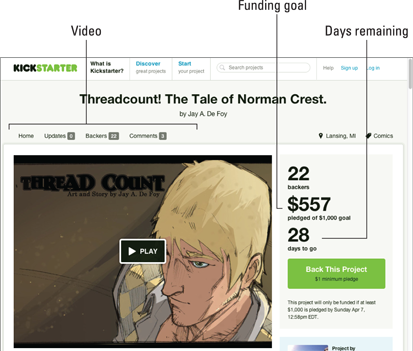
Figure 1-1: This campaign page shows the video, funding goal, and days remaining.
Over the weeks, your dollars raised will increase and your amount to reach your goal will decrease (ideally) each day until your campaign is over.
Kickstarter makes its money by taking a percentage (or fee) from your funds raised. Similar to a marketing fee, you are basically paying a commission to Kickstarter to use its website to promote your campaign. If your Kickstarter campaign is successfully funded, Kickstarter will take 5 percent of your final total for its fee.
However, if you come to the end of your Kickstarter campaign and have not reached your project goal, you do not receive any of the pledges listed to date. You have to raise your minimum goal amount to receive any of your backer pledges. You also do not pay anything to Kickstarter, since your campaign was not successful.
In this book, I explain how to prepare for your Kickstarter campaign so that you’re well-positioned for funding success. It’s also important to remember that Kickstarter is designed to get your project up and running, and you need to have a plan after your Kickstarter campaign is over. Chapter 10 looks at some of the tools available for creating a business plan for your project, setting yourself up for the opportunity to sustain your project after the campaign is over, and for making money in the future.
Recognizing the Advantages of Kickstarter
You might be a little intimidated by an all-or-nothing approach, and by the prospect of asking backers to help you reach your goal. However, this model has advantages for both you and your backers:
![]() A firm deadline forces you to focus on your campaign and on soliciting backers: If you weren’t working against the clock, you might be tempted to wait around to see what backers come in, instead of actively soliciting support. This format encourages you to move your project along quickly.
A firm deadline forces you to focus on your campaign and on soliciting backers: If you weren’t working against the clock, you might be tempted to wait around to see what backers come in, instead of actively soliciting support. This format encourages you to move your project along quickly.
![]() The all-or-nothing approach is less of a risk to your backers: Since nothing gets funded if the project does not reach its goal (that is, prove its value), backers don’t have to worry about supporting a potentially losing project. They know their accounts will not be charged unless a lot of other people also believe in the idea.
The all-or-nothing approach is less of a risk to your backers: Since nothing gets funded if the project does not reach its goal (that is, prove its value), backers don’t have to worry about supporting a potentially losing project. They know their accounts will not be charged unless a lot of other people also believe in the idea.
Kickstarter also makes it easy to spread the word about your project and build community:
![]() Backers can share their passion for a project with a click of the mouse: Because your fundraising happens online, backers can encourage others to get behind an idea through a Facebook or Twitter post that includes a link to your campaign page. Likewise, bloggers and journalists can boost awareness of your campaign and send potential backers your way with a link on their own blogs or websites. For example, Figure 1-2 shows a post about the Caravan Pacific Kickstarter campaign; the post appeared on the popular blog, Design Sponge.
Backers can share their passion for a project with a click of the mouse: Because your fundraising happens online, backers can encourage others to get behind an idea through a Facebook or Twitter post that includes a link to your campaign page. Likewise, bloggers and journalists can boost awareness of your campaign and send potential backers your way with a link on their own blogs or websites. For example, Figure 1-2 shows a post about the Caravan Pacific Kickstarter campaign; the post appeared on the popular blog, Design Sponge.
![]() Using Kickstarter to get your project off the ground truly creates a sense of community: Your backers feel like they are really making it happen and are often thrilled to get in on the ground floor of something.
Using Kickstarter to get your project off the ground truly creates a sense of community: Your backers feel like they are really making it happen and are often thrilled to get in on the ground floor of something.
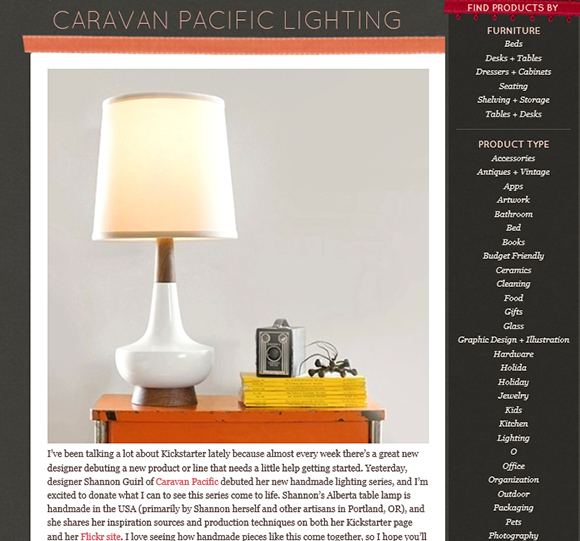
Figure 1-2: Example of how word can spread with just a click of the mouse.
![]() You retain creative control over your project: In the past, if you wanted to create a film, art show, project, or play, you needed financial backers. That might mean investors or a publisher or a studio behind you. The advantage was that potentially one major investor might give you the funds needed to make your concept come to life — but also exert influence and pressure to change your project to meet his or her specifications. You would gain a backer, but you might end up losing creative control.
You retain creative control over your project: In the past, if you wanted to create a film, art show, project, or play, you needed financial backers. That might mean investors or a publisher or a studio behind you. The advantage was that potentially one major investor might give you the funds needed to make your concept come to life — but also exert influence and pressure to change your project to meet his or her specifications. You would gain a backer, but you might end up losing creative control.
 One of Kickstarter’s greatest advantages is that you can still solicit the backing needed to get your project off the ground, but you maintain complete creative control, delivering a product that matches your vision.
One of Kickstarter’s greatest advantages is that you can still solicit the backing needed to get your project off the ground, but you maintain complete creative control, delivering a product that matches your vision.
Kim Krizan, writer of hit movies, Before Sunrise and Before Sunset, knew Kickstarter was the right vehicle for her when she wrote a tongue-in-cheek book about a femme fatale and wanted to produce it on her own terms.
Being a successful, established writer, she said on her Kickstarter page that she could “just get it into the hands of a publisher . . . I could also put it online and be done with it. But I thought it would be so much cooler to take it directly to you.” She decided to use her audience to make the project happen without the pressure of a publisher.
As shown in Figure 1-3, Krizan secured 183 backers and beat her $10,000 goal by almost $1,000, so she’s on her way!
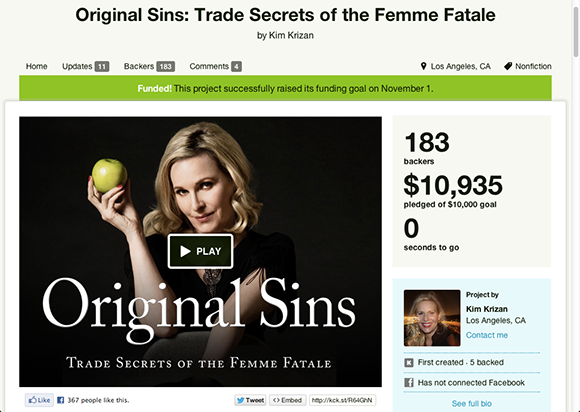
Figure 1-3: Successful Kickstarter campaign page for Original Sins: Trade Secrets of a Femme Fatale.
Knowing What Kickstarter Does and Doesn’t Fund
Unlike other web-based tools soliciting funds, Kickstarter is not a fundraising tool for charity.
Along those same lines, Kickstarter does not allow “Fund My Life” projects. You cannot have an open-ended campaign to raise money for a trip to Bora Bora or help you fund a sabbatical. Kickstarter campaigns are for specific projects and costs.
If it appears your Kickstarter campaign is to fund a vacation or allow you to quit your job, it will be denied.
Kickstarter also doesn’t allow certain types of content, such as knives, real estate, bath and beauty products, and nutritional supplements. This means projects such as ReadyCase, an iPhone case that includes a multitool with regular and serrated blades, as shown in Figure 1-4, wouldn’t have been a good fit for Kickstarter, even though it’s a legitimate project. The creators of this case chose a different crowdfunding site called Indiegogo.

Figure 1-4: Example of a project that would not meet Kickstarter guidelines.
Indiegogo differs most clearly from Kickstarter on one key issue: It’s not an all-or-nothing approach. Indiegogo has several models that allow you to keep your backer pledges even if you don’t reach your goal, for a higher fee.
For the full list of content Kickstarter does and doesn't allow, check out the Prohibited Uses section of the Kickstarter guidelines at www.kickstarter.com/help/guidelines. The next section goes into more detail about how you can familiarize yourself with Kickstarter's terms and conditions.
Reading the Fine Print Before You Start
Before you launch or back a campaign on Kickstarter, you need to make sure it’s a good fit for the site and understand all the terms and conditions. As I mention in the preceding section, you won’t get far on Kickstarter if your project doesn’t meet Kickstarter’s guidelines. You must also meet Kickstarter’s residency requirements. (You must live in the U.S. or the U.K. and meet certain requirements in each country.) And don’t forget, if your campaign is successful, Kickstarter takes a 5 percent cut of your funds, which is how the website stays in business.
In the following sections, I point you to the key areas of the Kickstarter site that help you become familiar with Kickstarter’s terms and the responsibilities you take on if your campaign is successful. I also point you to features on the Kickstarter site that help you run a successful campaign.
To find these tools, click the What Is Kickstarter? link at the top of the Kickstarter home page, as shown in Figure 1-5.
Reading through the FAQ
For a quick snapshot of all the parts of Kickstarter, click the FAQ (Frequently Asked Questions) link, and you see the page shown in Figure 1-6. Here you see three main sections:
![]() Kickstarter Basics: Discusses the concept behind the website, how you might use it, your responsibilities as a Kickstarter user, and getting involved with other Kickstarter projects.
Kickstarter Basics: Discusses the concept behind the website, how you might use it, your responsibilities as a Kickstarter user, and getting involved with other Kickstarter projects.
![]() Creator Questions: An overview of the main things you have to keep in mind and remember as you plan, upload, and launch a Kickstarter campaign.
Creator Questions: An overview of the main things you have to keep in mind and remember as you plan, upload, and launch a Kickstarter campaign.
![]() Backer Questions: Are you considering backing another Kickstarter project? This section shows the top questions and issues when it comes to pledging money to support another Kickstarter project.
Backer Questions: Are you considering backing another Kickstarter project? This section shows the top questions and issues when it comes to pledging money to support another Kickstarter project.

Figure 1-5: Click the What Is Kickstarter? link to find help and guidelines.
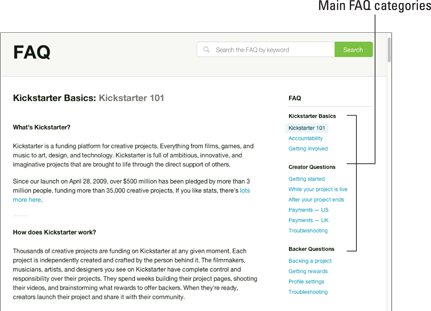
Figure 1-6: A list of the main FAQ categories.
Going to Kickstarter’s virtual school
Attending Kickstarter’s virtual school, shown in Figure 1-7, can help get you oriented right away. Kickstarter School is just what it sounds like — sections of the site presented in a classroom or textbook style, showing the main steps of launching a Kickstarter campaign:
1. Defining your project
2. Creating rewards
3. Setting your goal
4. Making your video
5. Building your project
6. Promoting your project
7. Project updates
8. Reward fulfillment
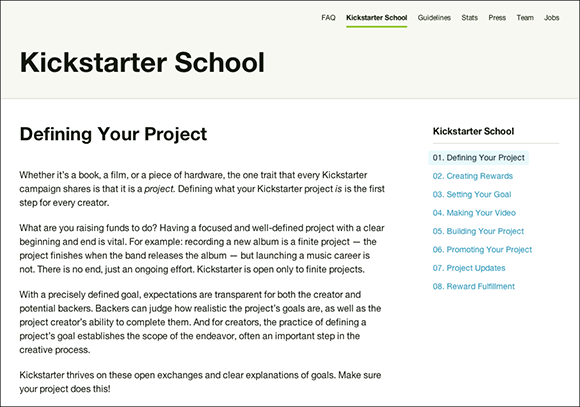
Figure 1-7: A look at the topics in the Kickstarter School.
Following Kickstarter’s guidelines
Earlier in this chapter, I discuss how Kickstarter — works and offer an overview of its guidelines. When you click the Guidelines link, you see a comprehensive list of all things to take into consideration when planning a potential Kickstarter campaign (as shown in Figure 1-8), including community guidelines.
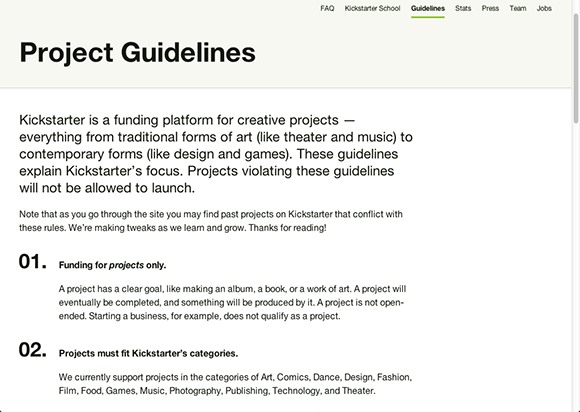
Figure 1-8: A look at the comprehensive guidelines.
Discovering the Crowdfunding Process
Running a successful Kickstarter campaign is a lot of work, but most of it is the fun kind of work because you’re doing it to support your passion and creative idea. The following steps walk you through the overall process of a Kickstarter campaign and point you to the chapters where you find out more about each phase of the process:
1. Make sure you have a clearly defined project.
To start, you need to make sure your idea is clear and unique. Then you need to figure out how to communicate why your project needs to be made in a straightforward and succinct way to your backers. You find help doing just that in Chapter 2.
2. Figure out what your fundraising goal should be and how much your rewards need to cost in order to meet that goal.
Because Kickstarter requires you to ask for a certain amount of money, you have to figure out the minimum amount of money you need to cover the costs of creating your project — and the different levels of donations you need to meet that goal. Chapter 3 goes into detail about building an accurate budget.
3. Set a realistic timeline.
Kickstarter requires you to raise your funds in a certain amount of time, and your backers will also want to know when they’ll receive the rewards you’re offering. Your campaign and your relationship with your backers will go much more smoothly if you think through your timeline in advance. In Chapter 4, I lay out some suggestions on how to build a timeline that works for both you and your backers, taking into account such factors as troubleshooting possible delays, handling holidays, and watching out for industry factors that might influence your planning process.
4. Prepare your campaign and submit it for Kickstarter review and approval.
Steps 1–3 are all up-front work. You want to make sure you’ve thought through the important details before you start developing your campaign page through Kickstarter’s dashboard for project creators. This step is where you take all the content and data you’ve been developing and enter it into what amounts to a proposal that Kickstarter will review. If your project meets all of Kickstarter’s requirements, you receive an e-mail that Kickstarter has approved your project. Chapter 5 walks you through each part of the Kickstarter project setup process and gives you helpful tips to ensure that your project makes it through the review process smoothly.
5. Launch your campaign and promote your project on a day-to-day basis.
You can’t just launch your campaign and hope for the best. To reach your funding goal, you need to reach out to friends, family, and your personal and professional communities. You also need to promote your deadline. Chapter 6 helps you stay on top of all the key tools, both online and elsewhere, that help you reach out to potential backers and the backers you gain throughout your campaign. Chapter 7 orients you to the tools in the Kickstarter-sponsored iPhone app that help you manage an active campaign while you’re on the go.
6. Stay in touch with backers as you create your project and deliver backer rewards.
Remember, when you get to the end of your Kickstarter campaign, that doesn’t mean your project is over — far from it! Your backers have invested their own money in your project and are likely interested to hear how it’s going. You have a unique opportunity to continue building community among your backers as you create your project. You also have to manage the nuts and bolts of delivering the rewards you promised your backers in a timely manner. Kickstarter has tools to help you with all these, and in Chapter 8, I walk you through the steps of using each one. You also find my tips for finishing your campaign and building upon it to ensure long-term success.
In Chapter 9, you find ten unique reward ideas, and in Chapter 10, ten resources beyond Kickstarter that can help you throughout the stages of your Kickstarter campaign. Each of these chapters gives you even more ammunition for Kickstarter success!

 Kickstarter uses an all-or-nothing approach to fundraising. This means, if you don’t hit your fundraising goal within a certain timeframe (about 30 to 60 days), you get
Kickstarter uses an all-or-nothing approach to fundraising. This means, if you don’t hit your fundraising goal within a certain timeframe (about 30 to 60 days), you get